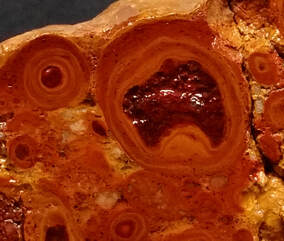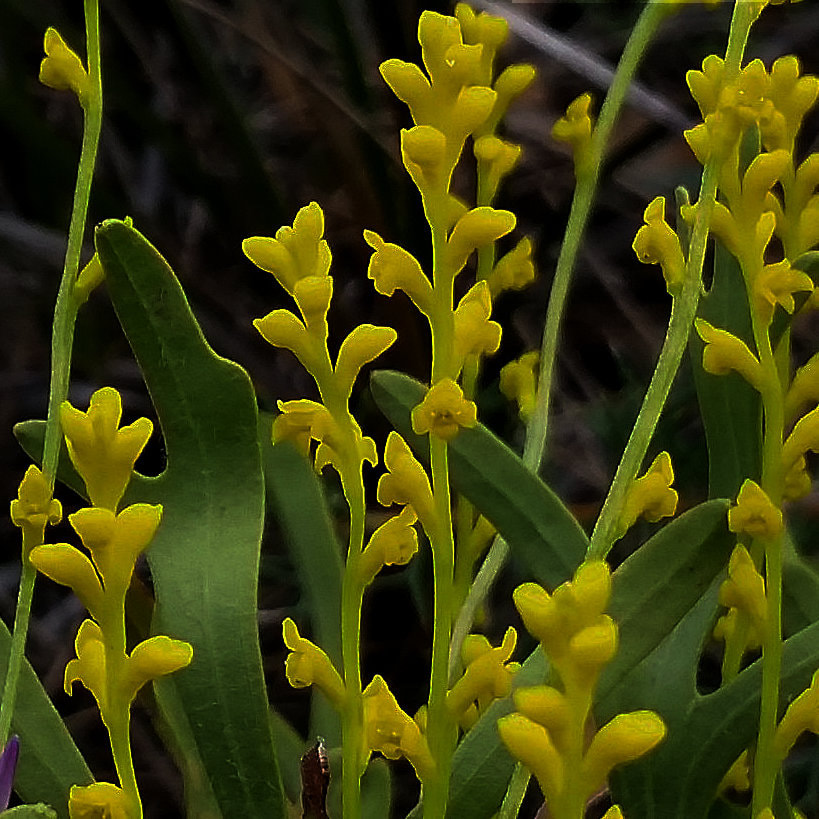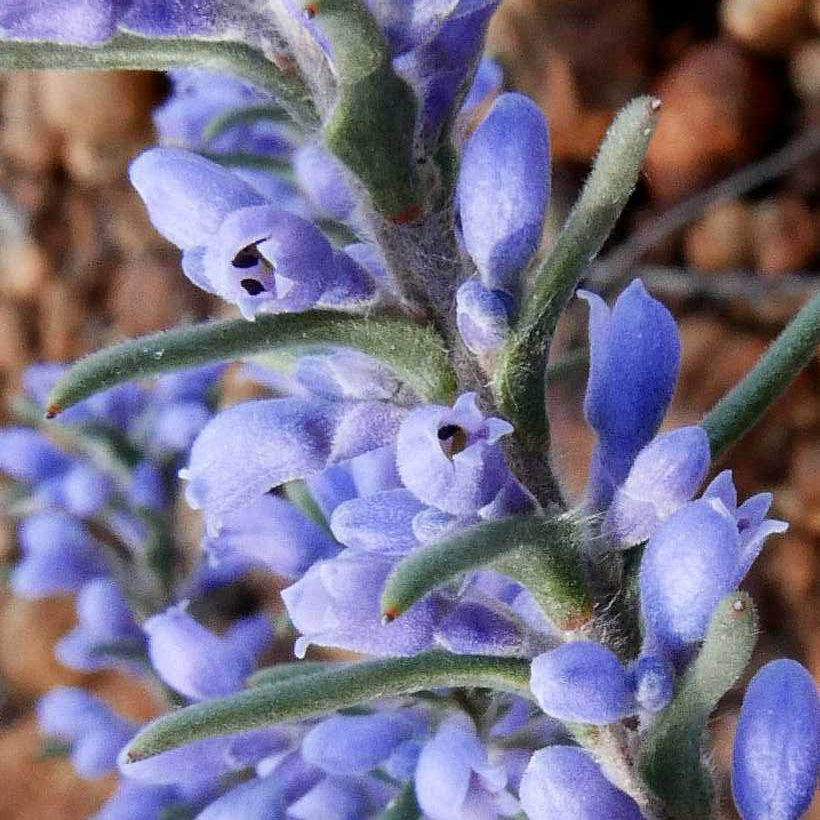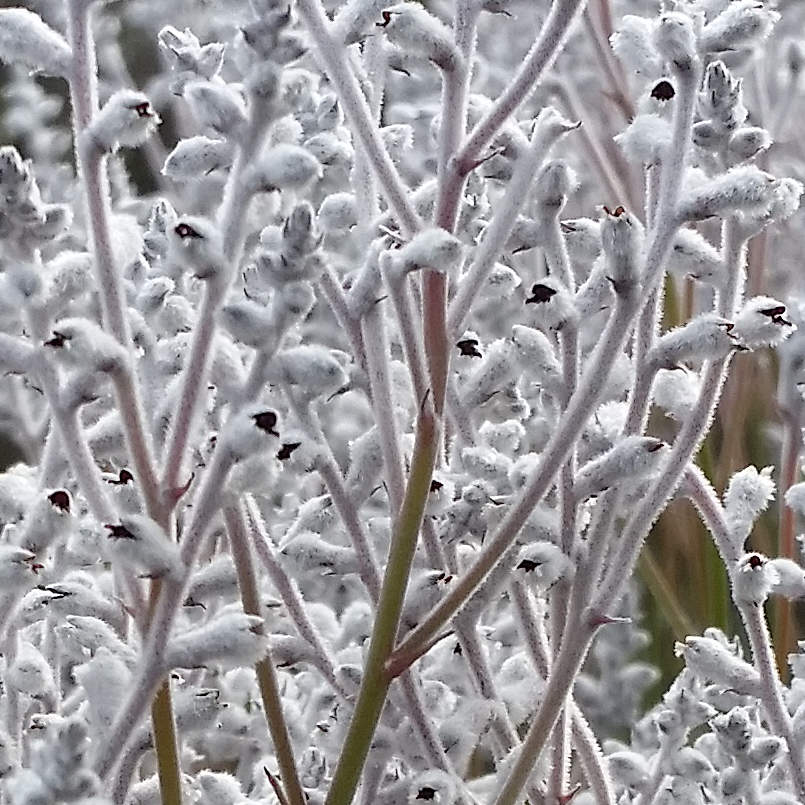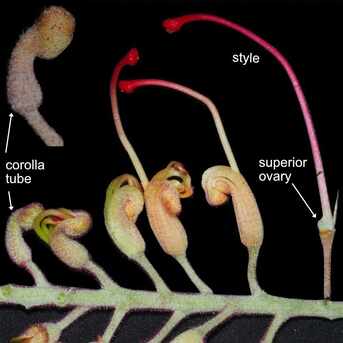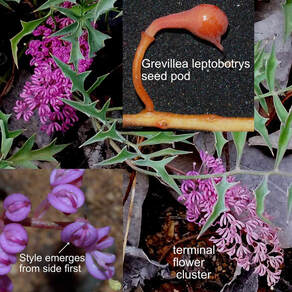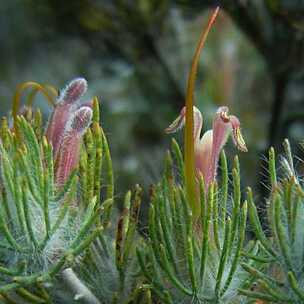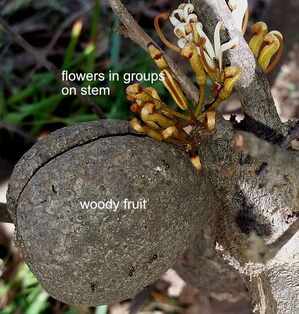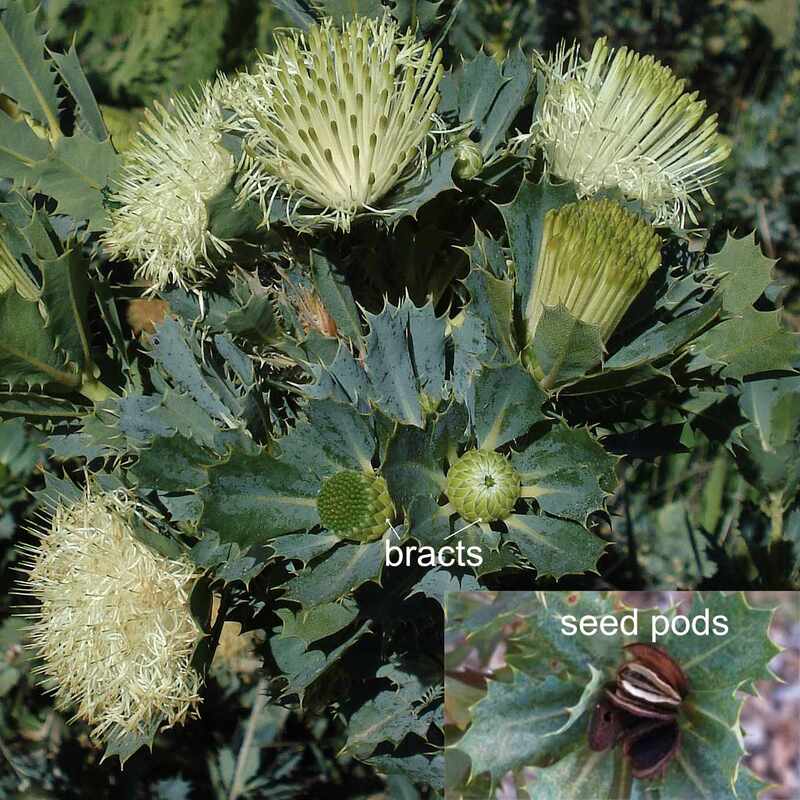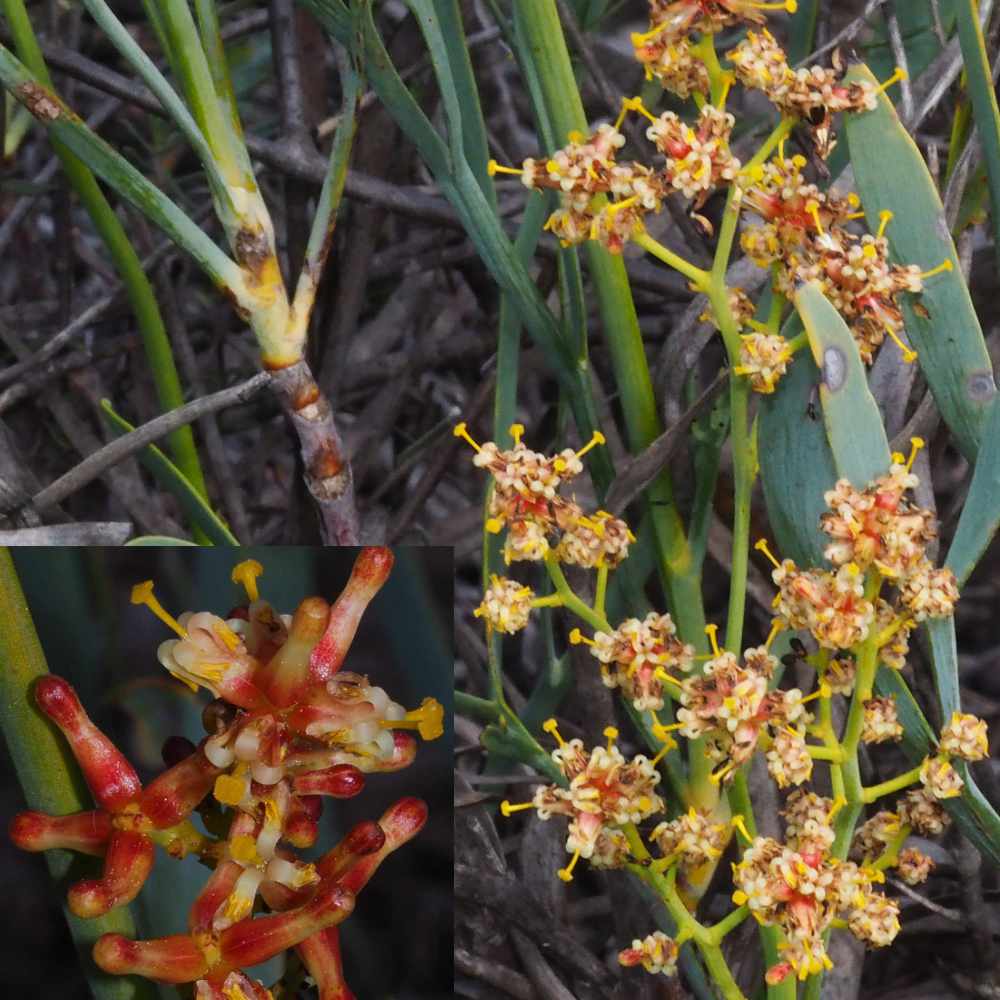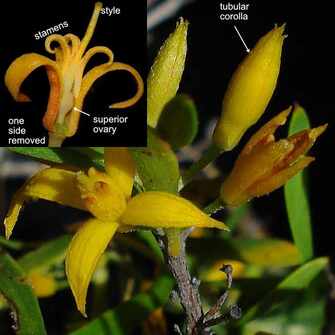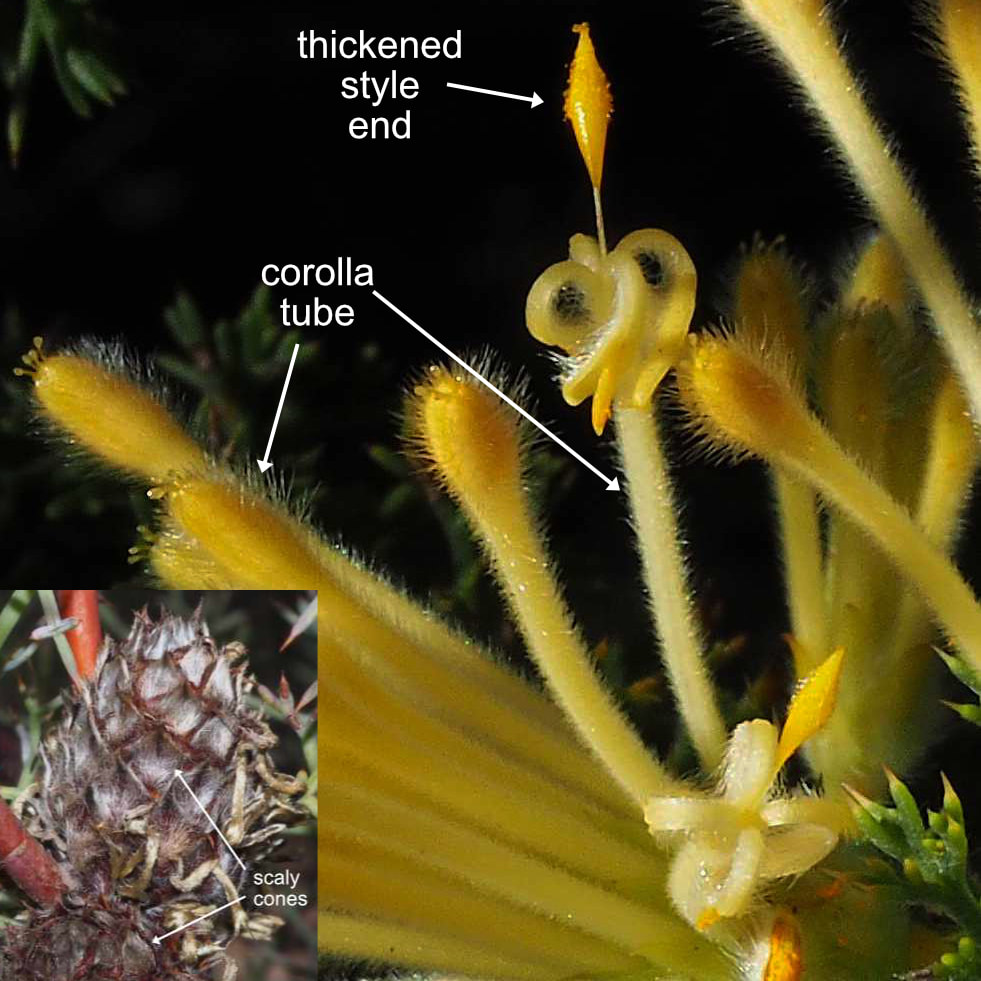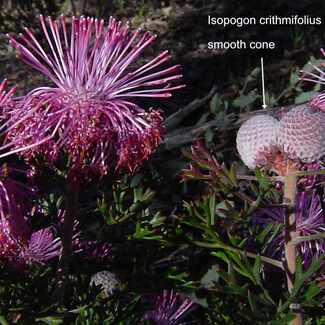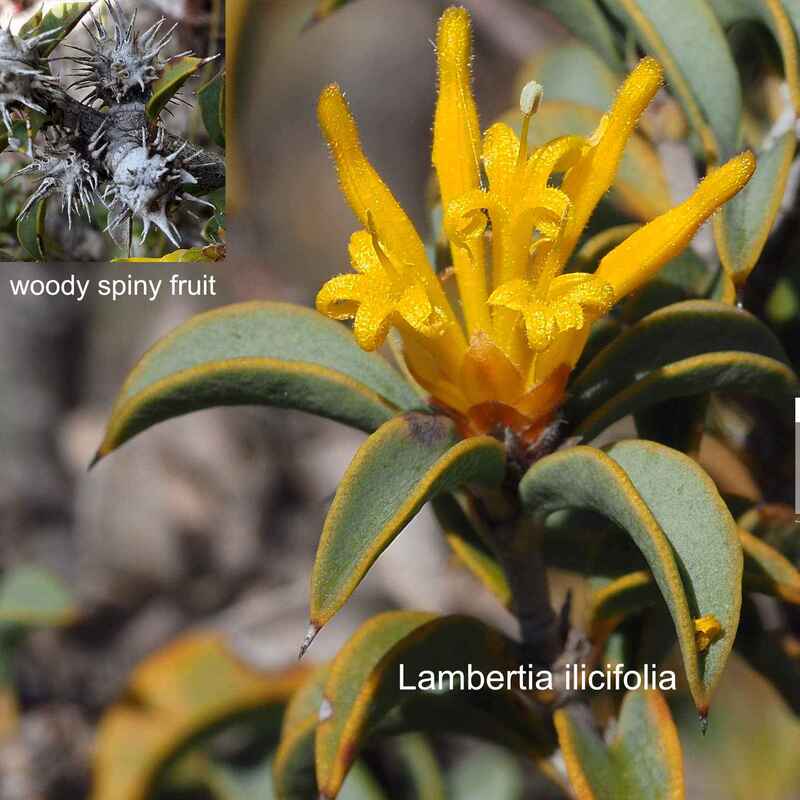| I became interested in Proteaceae via gravelly soils while working for the WA Department of Agriculture as an adviser. At that time it was thought that ancient fluctuating groundwater created gravel, and that Proteaceae evolved to grow on these soils. Dr Bill Verboom (a work colleague), turned this idea on its head by proposing that plants can create soils to give them an evolutionary advantage. Proteaceae have evolved cluster roots, which enable them to access the nutrient phosphorus in infertile soils. Cluster roots and associated soil microbes create lateritic soils including bauxite. For more information click here. |
| Proteaceae have tubular flowers (a corolla) consisting of four tepals (combined petal/sepal), which are mostly joined into a tube. The central female part consists of a superior (above surface of flower base) ovary connected to a single unbranched style. Their fruit only has one or two seeds in a 2-lobed papery (Grevillea) or woody (Hakea, Lambertia) fruit or cone (Banksia, Isopogon or Petrophile, or tiny nuts (Conospermum, Synaphea, or drupes (Persoonia). Most Proteaceae produce few seeds, particularly resprouters |
